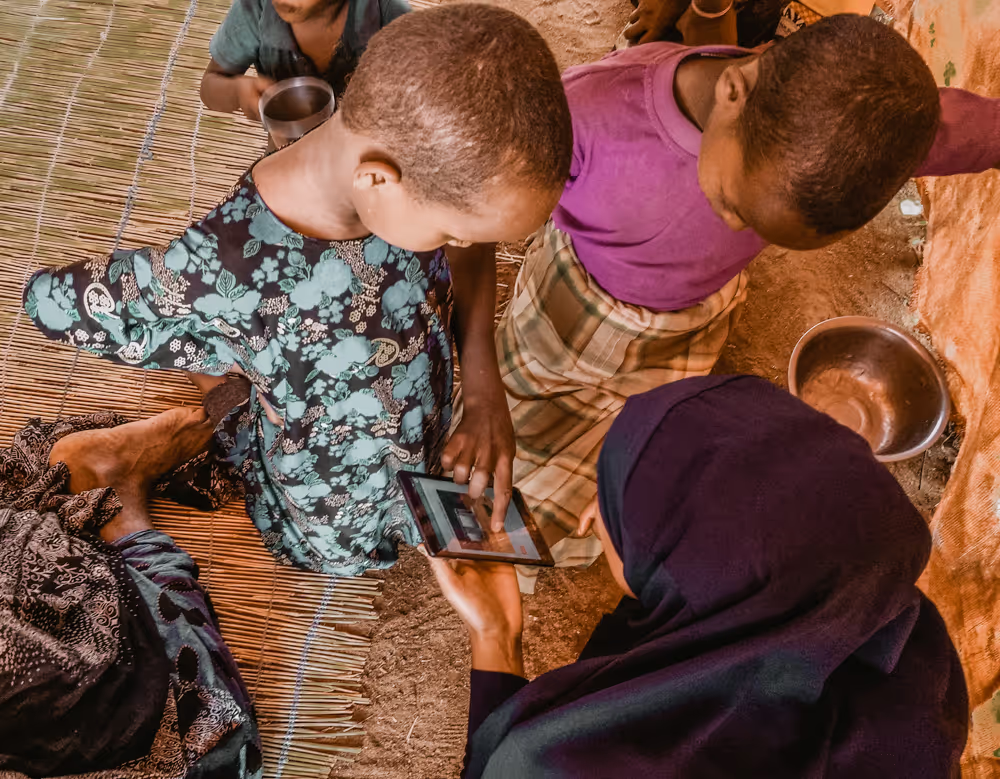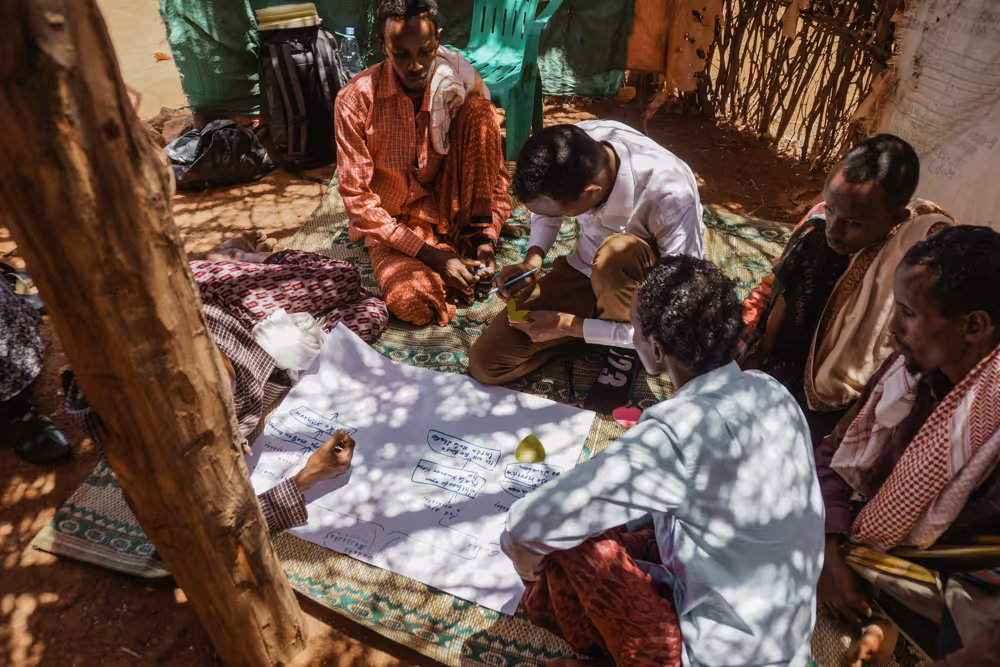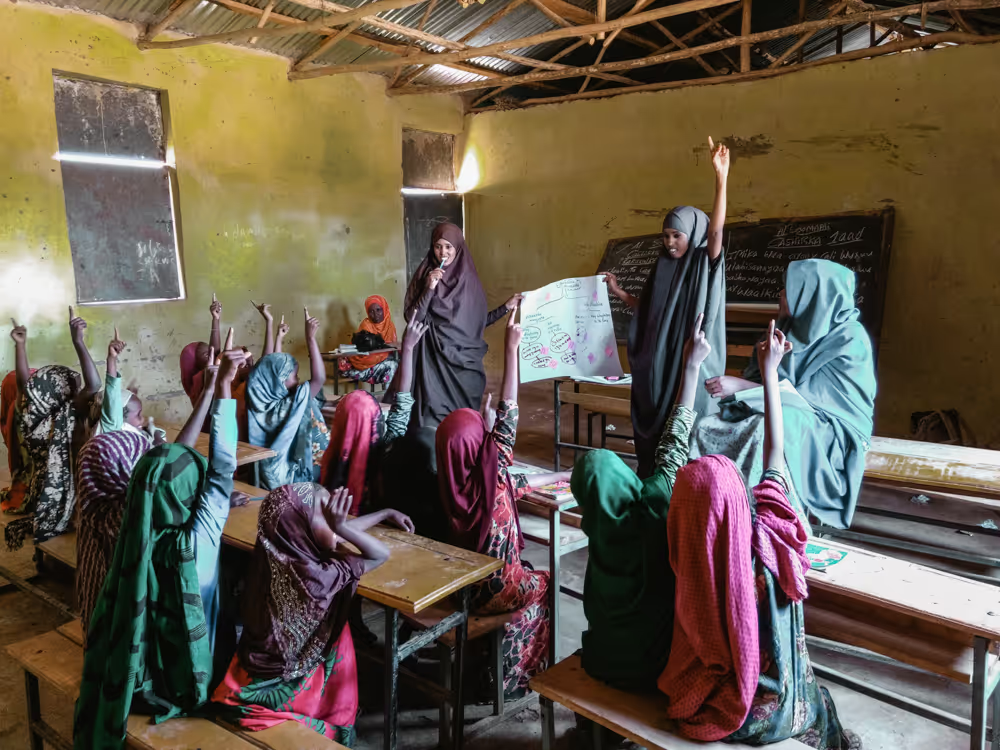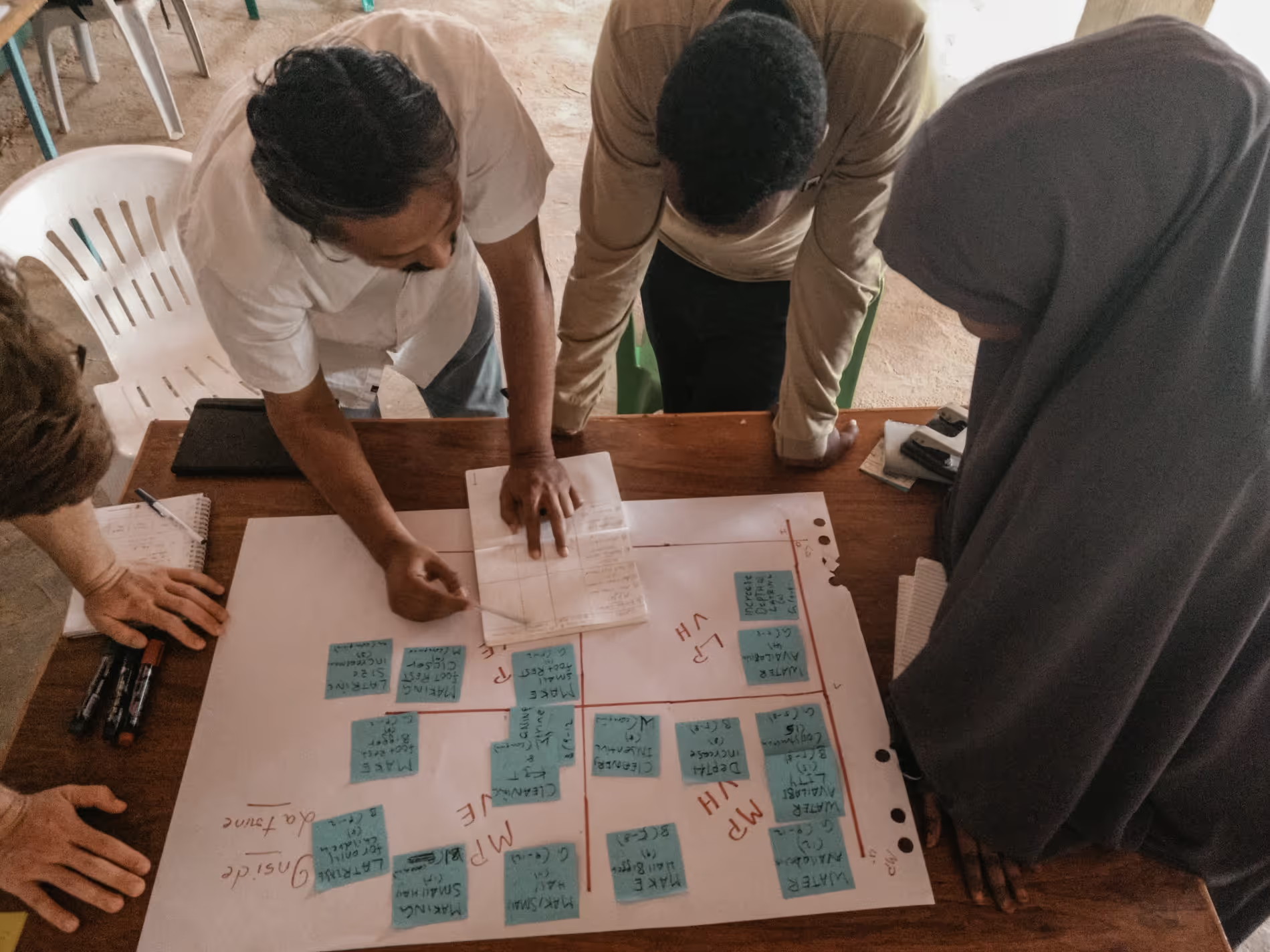Giving children and caregivers a stronger voice in emergency WASH response
07
January
2020
Type
Grantee insights
Area of funding
Humanitarian Innovation
Focus areas
No items found.
Year
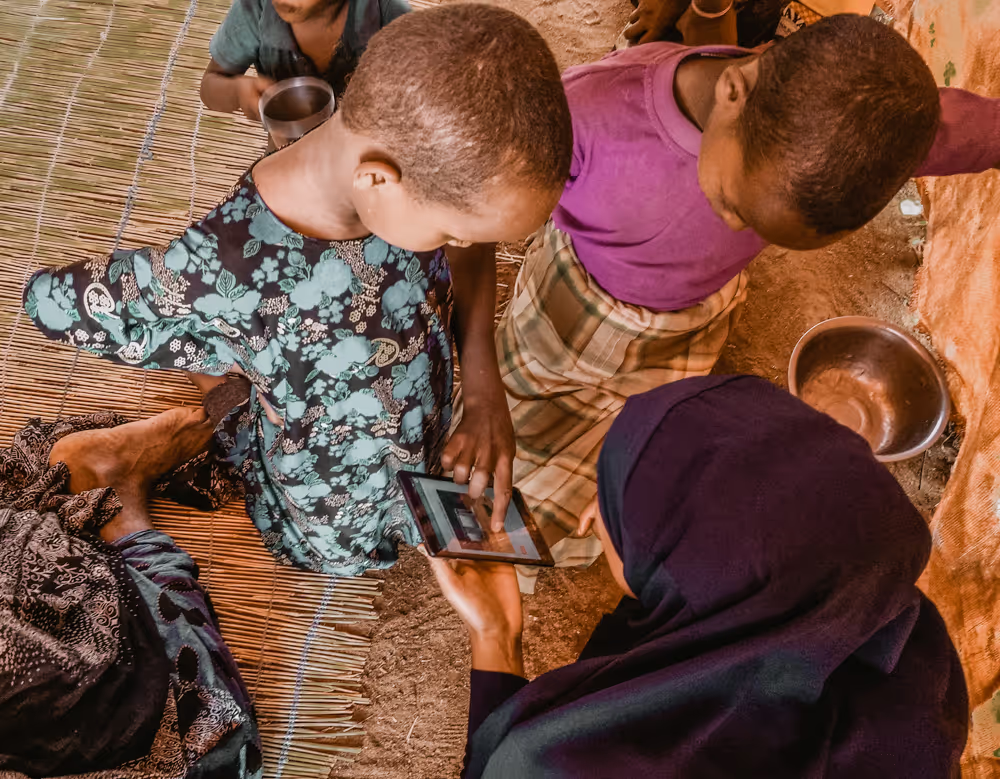
Written by Sofya Bourne and Abraham Varampath
A crisis in Eastern Ethiopia
Somali region in Eastern Ethiopia has been dealing with recurrent droughts over the last decade. A visit to Tukaley, a small kebele (village) with a population of 570 households, north of Kebridahar town, Korahey zone, will give a sense of how climate change affects people’s lives, livelihoods and perhaps even an ancient culture of pastoralism.
Pastoralist families from various parts of the Somali region have been trickling to and settling in Tukaley since early 2010. This is due to recurrent droughts and large-scale loss of cattle, which was and still is their main source of livelihood for these communities.
New internally displaced people in Tukaley
The construction of the highway between Gode and Jigjiga – two large towns in the region – attracted these internally displaced people (IDPs) to access food and essential commodities distributed by the Government and international agencies. In the year 2018/19, approximately 200 households arrived in Tukaley as new IDPs.
The most critical need for the families who have settled in Tukaley is access to water for drinking, domestic use and their livestock. They have been depending primarily on purchase of water from private suppliers, and in kind through water trucking by Government and international agencies such as Save the Children.
During the rainy season though, people and livestock access water from rainwater harvesting structures called ‘Birkas’.
With diarrhoea and malaria being the two main diseases affecting the population, particularly children, it is imperative that access to adequate water, sanitation and hygiene facilities is improved. They are a fundamental basic human right.
Save the Children’s WASH response to date
Save the Children has been working in Tukaley since IDPs began settling here. Every year Save the Children has supported improving access to food, education and water and sanitation facilities.
Recognising the dire need for access to latrines, particularly for women and children in Tukaley, Save the Children constructed four blocks of latrines, each with four cubicles in 2019.
This was the first time that the families and their children in Tukaley have had access to any kind of latrines, with open defecation being the main practice thus far.
Though there were consultations with the community on where these latrines should be located, it was also important that the families and children understood the latrine design elements. Understanding how the latrines work will enable them to not only consistently use them, but also maintain them.
In order to address this, the User-Centred Community Engagement (UCCE) pilot project supported by the Humanitarian Innovation Fund implemented in partnership between Save the Children and Eclipse Experience gave us the perfect tool and opportunity.
Piloting User-Centred Community Engagement in Ethiopia: The 'What' and the 'How'
The UCCE is a rapid participatory design methodology. Its two core elements – Interactive Digital Surveys and Co-Creation Sessions - work together to help humanitarian field staff engage people affected by crises in the design of humanitarian programmes.
The UCCE pilot in Ethiopia was the third pilot for this innovation, Bangladesh and Iraq being the previous two different contexts where it was tested. As in previous pilots, we used UCCE in Tukaley to make sanitation facilities more child friendly.
From the pilots in Iraq and Bangladesh, we had good early evidence on the ‘what’ of the projects: what the field teams did (implement UCCE) and what the projects resulted in (child-friendly latrines). But without observing the use of the UCCE approach in either context, we were missing a crucial piece of evidence - the ‘how’ of UCCE implementation. Piloting UCCE in Ethiopia in September 2019 allowed us to fill this knowledge gap.
Interactive Digital Surveys
We spent the first week in Tukaley on the Interactive Digital Surveys. The Save the Children field team conducted these with children aged 5-12 and their primary caregivers.
Observing the surveys’ implementation was incredibly interesting. It showed how different people in the community interacted with the surveys and the technology that supports their implementation. We designed the surveys to be lightweight and interactive, making use of illustrations that children and caregivers can tap on to indicate their responses, instead of standard text-based questionnaires.
Going from one household to another with the data collectors, we saw children reacting to the surveys in all kind of ways. Some children were visibly excited, lining up to take the survey one after another, and eagerly tapping on the illustrations to show what they didn’t like about current latrines’ design.
Other children were more timid, requiring more encouragement from their caregivers and data collectors to be comfortable to participate. Overall, the surveys seemed to be great fun for the community and easy to implement for the data collectors.
Co-Creation Sessions
Once the survey data was collected and analysed, we were ready to start with the Co-Creation Sessions.
These creative community engagement sessions are designed to bring together data collectors, WASH staff and community members. Together they explore the problems identified in the surveys in more detail, and come up with ideas and suggestions for how these problems can be addressed.
Co-Creation Sessions with children were the most fun to watch, including fun warmups and other playful activities to engage children of different ages. It was also exciting to see the caregivers engage with the subject matter in more depth than they normally would have the opportunity to during their Co-Creation Sessions.
In the session with male caregivers in particular you could see the participants becoming increasingly aware of the challenges that their children are having with the existing sanitation facilities. This made them more invested in finding appropriate solutions for making the facilities more accessible to all children in their community.
What’s next?
No community engagement activity should go without the results being analysed and feedback being addressed. Save the Children and Eclipse Experience are working with the WASH team in the Somali Region and the community to implement the modifications of the sanitation facilities in Tukaley as we write this blog.
A second Interactive Digital Survey with the children and caregivers is planned six weeks after the modifications. This will enable the team to:
- understand whether any further changes are required to the sanitation facilities that will enable better acceptance by children and caregivers,
- further to analyse the efficacy of UCCE as used in Ethiopia context, adding to the ongoing evidence building for this innovation.
The importance of providing a stronger voice to children and caregivers must never be discounted during an emergency response. The UCCE gives humanitarian agencies working with children an excellent opportunity to facilitate this.
No items found.
Stay updated
Sign up for our newsletter to receive regular updates on resources, news, and insights like this. Don’t miss out on important information that can help you stay informed and engaged.
Related articles
all latest news
.png)
Elrha insights
The 16 Days of Activism: Innovating GBV response amid global challenges

Elrha insights
Integration, inclusion, and innovation: What we learned at the 2025 International Conference on Family Planning

Elrha insights
Climate adaptation in humanitarian WASH: five lessons from World Water Week
Explore Elrha
Learn more about our mission, the organisations we support, and the resources we provide to drive research and innovation in humanitarian response.
